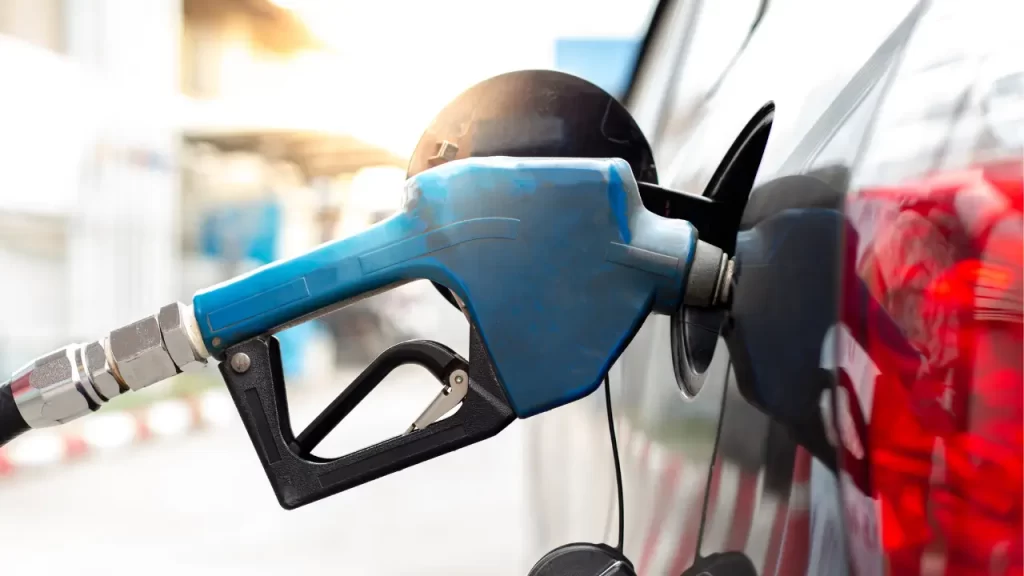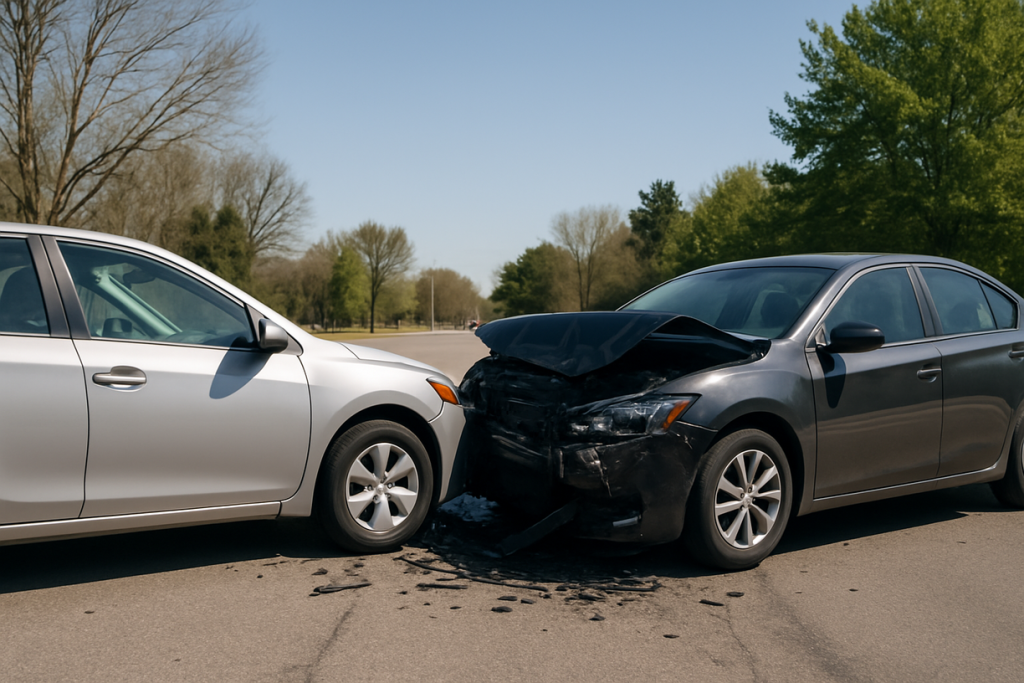Introduction
Dash cams have become almost as important as seat belts for a lot of people without them noticing—they are not only for peace of mind but also for real protection on the road. A well-placed dash cam can be a lifesaver no matter if you are dealing with city traffic or going fast on the highway, especially when the situation changes unexpectedly. Deciding on the correct place for mounting the dash cam is not only placing it anywhere on the windshield, but it is also finding a compromise between a clear video, driver’s safety, and being legal.
Most dash cams are available in three different types: front, back, or dual-channel that covers both sides. Each kind has its own role; however, they all require a careful choice of the place. If you choose wrong, the situation can get ugly, e.g., you can get unclear video, a driver that is not concentrated, or even a fine. On the other hand, if you choose the right place, it will mean that there will be clear evidence, the roads will be safer, and you will have one less problem in case you have to prove your case. Therefore, being familiar with the procedure of installing a dash cam is not only technical knowledge but also a wise decision for every driver.
Where is the Best Place to Mount a Dash Cam?
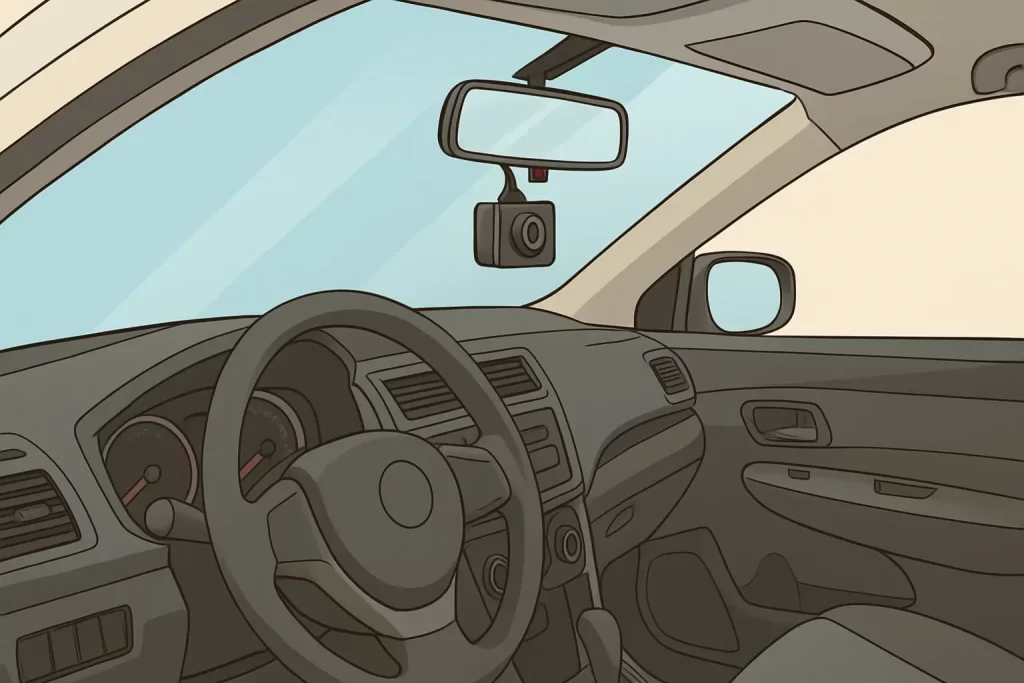
Picking the perfect spot for your dash cam is more than just sticking it onto the windshield and being done with it. Most drivers swear by installing the camera right behind or just below the rearview mirror on the windshield. A position is a crowd favorite for good reason—it makes it so the camera is out of your line of sight, but it still captures a wide, unobstructed view of the road ahead. You get to record both lanes, spot traffic lights, and catch license plates without neck straining or screen squinting.
Also, a high-mounted camera on the windshield is definitely within the range of the wipers’ motion, so wiper action will do more than just clear wet—it’ll clean and clear any gunk on the lens. Besides, it is less visible from the outside; hence, it works as a deterrent for thieves and keeps your ride looking clean. Some folks tuck the dash cam onto the tint strip at the top of the windshield for extra stealth, but make sure—don’t allow the tint to invade the camera’s field of vision.
If your place has some legislation that prohibits windshield mounts, then mounting on the dashboard is the next best thing. Just make sure it is low and centered so you don’t get your view of the road blocked. Slightly tilt the lens up for a better angle, aiming to capture about 60% road and 40% sky. That mix is nice for the camera to regulate its exposure, and also it keeps the important stuff in focus.
Be it anywhere you decide to go, always keep in mind: the target is to get as much road as possible without making distractions or committing any law offenses. Furthermore, do not forget to check the regulations that govern your particular area. Certain regions implement very strict rules about what can and cannot be placed in your windshield.
Where to Mount Rear Dash Cam?
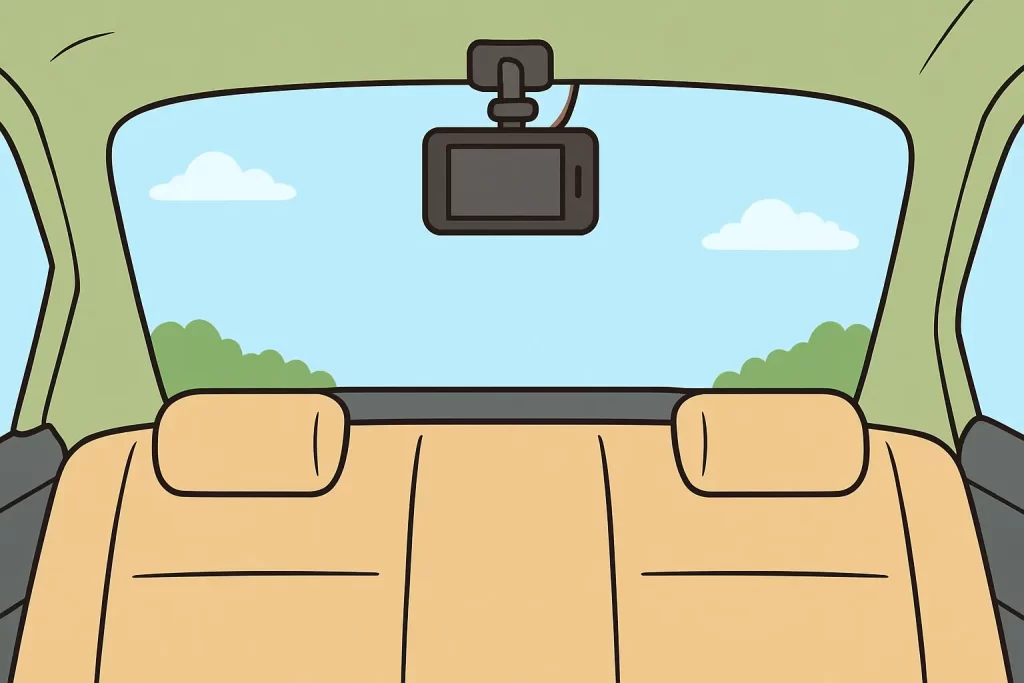
Installing a rear dash cam in your car gives you a little more freedom compared to the front one, but it still needs a careful spot. The most frequent and efficient place is on the top of the rear windshield, near the center. This location provides an unobstructed, broad view of the road behind your car, recording everything from tailgaters to unexpected obstacles. Also, putting it at the top means the camera is not blocked by the top of the seats or the passengers in the back, which could happen if the camera is in the lower part of the car.
However, if your car’s rear window has defroster lines or tint that could affect the video quality, then you might want to place the camera on the rear deck under the window. It is still a good spot, and it might not be as bright or as easy to be covered by the things around it.
Check that the camera placed at the back does not hinder your rearview mirror or any sensors, and do not forget that you should always have full visibility through the rear window. Also, it would be a good idea to find out the local laws—you can put it on the back of the car in most places, but still, there are some that require you to put it on the dashboard instead of the rear window.
The main idea is that you get a very clear and uninterrupted view of the rear without safety and legal issues. A suitable place means your rear dash cam is primed to record incidents that the front camera might not be able to capture.
What are the Legal Restrictions on Dash Cam Placement?
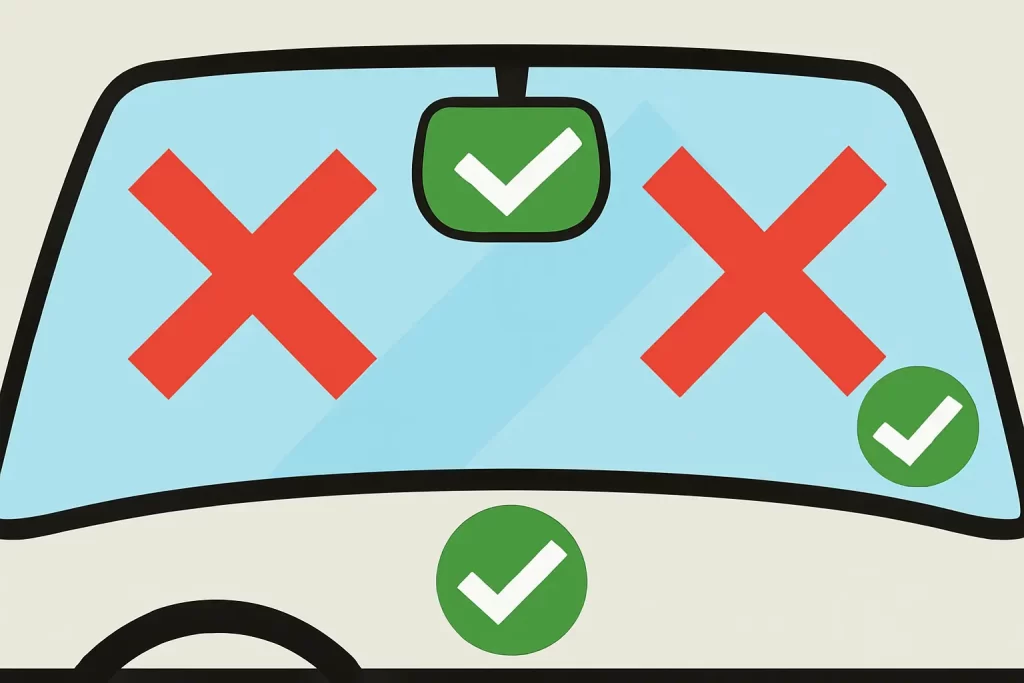
Dashcams may be legal in almost every location, but the position of them still matters a lot. Most areas have one main requirement for the cameras—they have to be such that they do not obstruct the driver’s sight in any way. A brief overview of the situation with regulations in the United States is that each state has its own rules. In Alabama, it is not allowed to have anything on the windshield—only on the dashboard, and here too, it should be no more than what is necessary for the sight to be clear. The rules in Alaska are more permissive, but they still specify the size: the side of the driver’s seat should be no more than five square inches. As a result of these regulations, in California, you can install the dash cam either in a place not exceeding five inches in the upper middle part of the windshield or in a place not exceeding seven inches in the lower corner that is farthest from the driver.
Florida’s law is very restrictive about things that can be placed on the windshield, and the situation is even worse if your dash cam is obstructing your view; you are facing a fine even if the camera is small. That is why the rule is valid not just for the windshield but also for the side and the rear windows—when the vision of the driver can be affected, nothing should be there. In the UK, it is quite simple: except for the very top position, which is the washed area of the windshield, it is not allowed to have a dash camera there. In case the visibility is significantly compromised by an object placed in the car, the annual vehicle check will result in a failure, and, furthermore, the vehicle owner may get a fine.
In case of a breach of regulations, you are likely to be fined, and what is even worse is that your dash cam recording may not be accepted as evidence by the court or your insurance company. Some states have additional conditions, like acquiring consent from everybody involved before recording any audio, for example. In brief, before you install, always make sure that your vision is not blocked; it is necessary to be sure of compliance with the regulations in your area.
How to Mount a Dash Cam Properly?
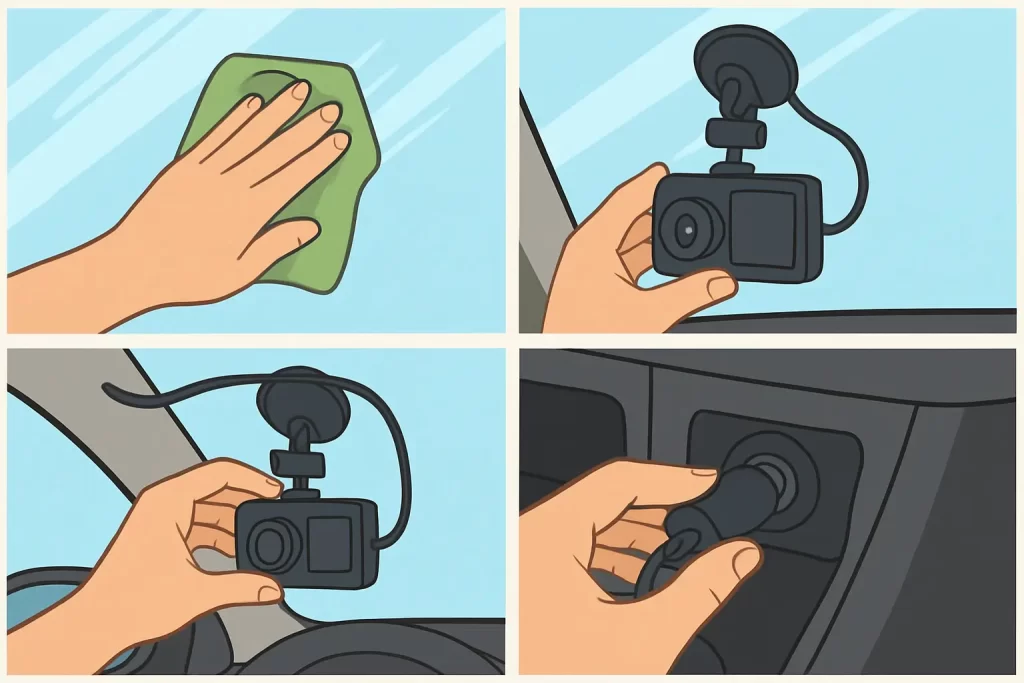
Installing a dash cam is not a difficult job, but a little effort results in clear evidentiary footage and no troubles with operation. First of all, select the spot that will be perfect for cameras to be installed—generally this place is just behind or below the rearview mirror for the front camera. Be certain that the lens is directed straight forward and a little downward; it will allow the lens to see more road than sky. Move your fingers along the windshield to find a smooth surface, then clean it with a microfiber cloth and some rubbing alcohol to get rid of any dirt or grease.
The next step is deciding whether to use a suction cup or adhesive mount. Suction cups will work if you want to move the camera from one car to another or change it frequently, but in case of extreme temperatures, suction cups can lose their power. Adhesive mounts are like a glue that cannot be undone (because they are glue), meaning you will have a rock-solid hold if you are sure you picked a good place; if not, changing places could be problematic.
How you route the cable is the tricky part here. Conceal it in the corner of the headliner, then continue along the A-pillar (but avoid airbags), and finally under the dashboard until you reach the power source. Fasten the cable with clips or use some kind of cable organizer so it looks like it is not there. If your dash cam gives you a long cable, do not allow it to hang freely; tie it so that it won’t bother you or be an obstacle.
When everything is correctly installed, recheck the camera’s field of view and modify it if necessary. Make a try recording to see if it is not over- or underexposed. A firmly and ideally positioned dash cam is not only a gadget—it is like your silent supporter on the road.
What Factors Should I Consider When Choosing Dash Cam Placement?
Where to mount your dash cam impacts the whole set of your decisions. Firstly, the field of view plays an important role—a good spot allows the camera to see a big part of the road without blind spots. It is necessary that the lens could see as much as possible, but at the same time it should not be affected by the glare or reflections from the dashboard or windshield. Then, you should also consider the safety aspect: do not put the camera in the place where it might become an obstacle for the airbags, sensors, or your line of sight. Although it may seem very convenient, placing it in the middle could block your view or interfere with the safety features.
More than that, another point to be taken into consideration is convenience. You don’t want to have to reach out for the controls or change the memory card while driving without taking your eyes off the road. Finally, if you think about it, the issue of theft cannot be ignored here as well. In addition to reducing the risk of your dash cam being stolen or tampered with if you are away from the car, a discreet or removable mount also reduces the risk of theft or tampering. Finding the right balance between these factors means that your dash cam will remain inconspicuous and still be able to do its job flawlessly.
Can I Install a Dash Cam Myself or Should I Seek Professional Help?
Generally, installing a dash cam on your own is quite a simple process, especially for basic models. The majority of kits come with clear instructions and several online guides that show you every step from mounting the camera and routing the cable to connecting the power source. If you’re comfortable handling simple tools and following directions, you can get the job done in less than an hour. Just remember not to hide wires in the airbag paths and double-check the camera angle for a clear view.
However, in case you want to have these features, such as parking mode, hardwiring, or multiple camera setups, things get more complicated. Hardwiring means that you will have to access your car’s fuse box to make the connection, which can be dangerous if you are not sure about the car’s electronic parts. That is why it is good to have some help from the professional. The pros will do the installation in such a way that you do not have to worry about the battery running out or the damage to the car’s electrical system because they have hidden the wiring and ensured a reliable power source.
FAQs
The ideal spot is on the front windshield, just behind or near the rearview mirror. This location offers a clear, wide view of the road ahead without obstructing your sight, capturing about 60% road and 40% sky for balanced footage.
Yes, you can mount it on the dashboard if local laws allow. While windshield mounting behind the rearview mirror is preferred for the best view, dashboard mounting is a good alternative—especially in states where windshield mounts are restricted. Just make sure the camera angle is adjusted upward to capture the road properly and that it doesn’t block your view.
Check your state’s specific dash cam laws. Many states require the camera to be mounted so it doesn’t obstruct your view or interfere with airbags. Some limit the size and exact placement on the windshield (e.g., California restricts placement to certain small areas). Inform passengers if your dash cam records audio, as some states require consent from all parties.
Mount the dash cam high on the windshield, right behind the rearview mirror, where it’s least intrusive. Adjust the angle so it captures the road without blocking your line of sight. Also, route cables neatly along the edges to avoid distractions.
Hardwiring is often worth it because it provides a constant, stable power supply without relying on the cigarette lighter. This allows the dash cam to operate even when the car is off, enabling parking mode and better reliability. It also avoids loose plugs and power fluctuations. However, make sure to use a safety cutoff device to prevent draining your car battery.
